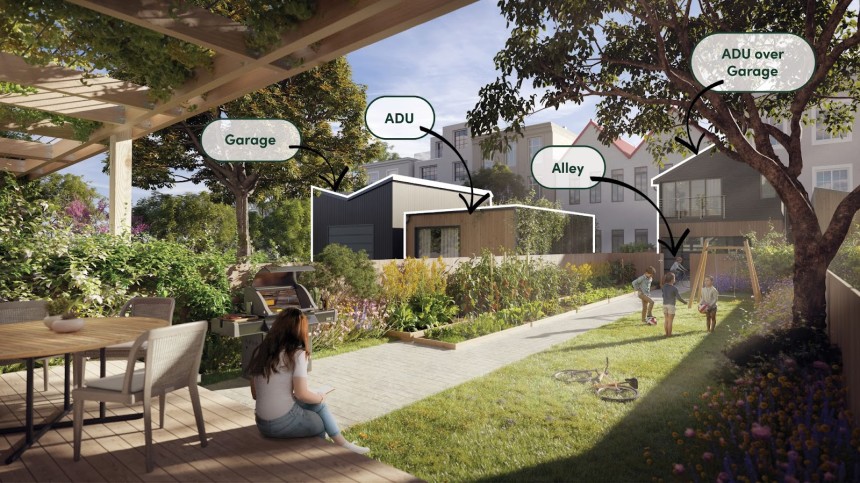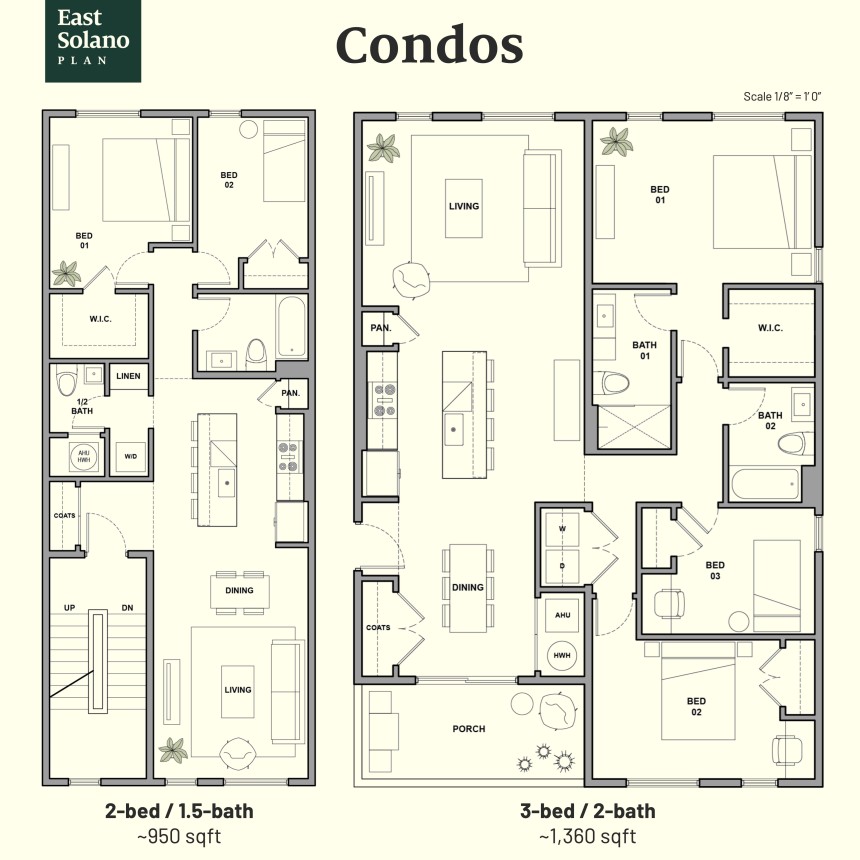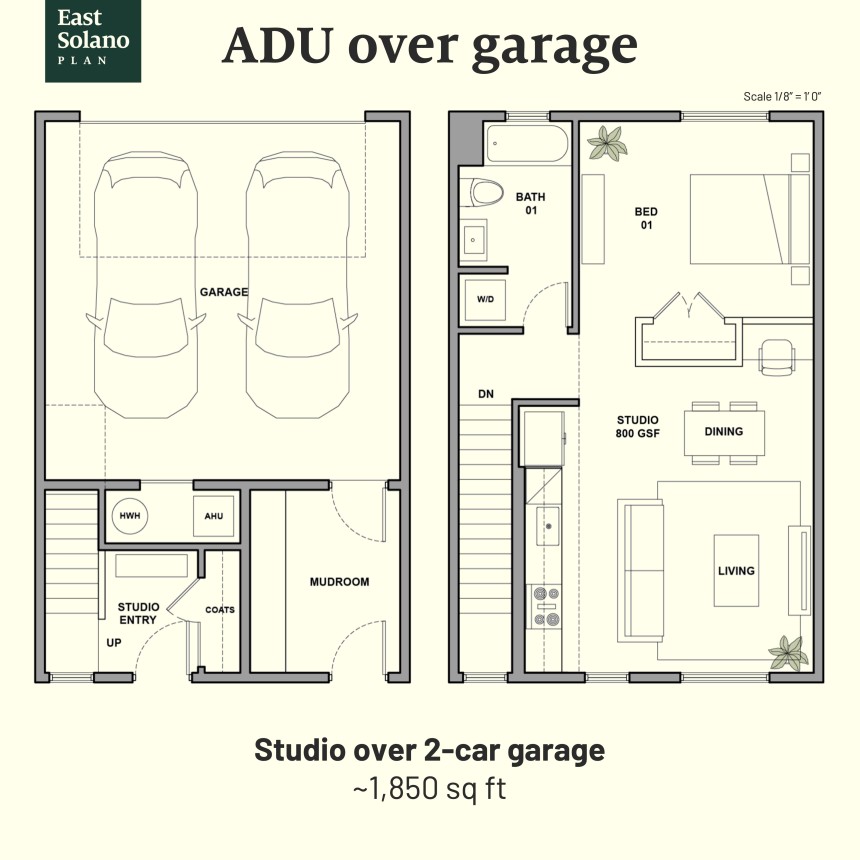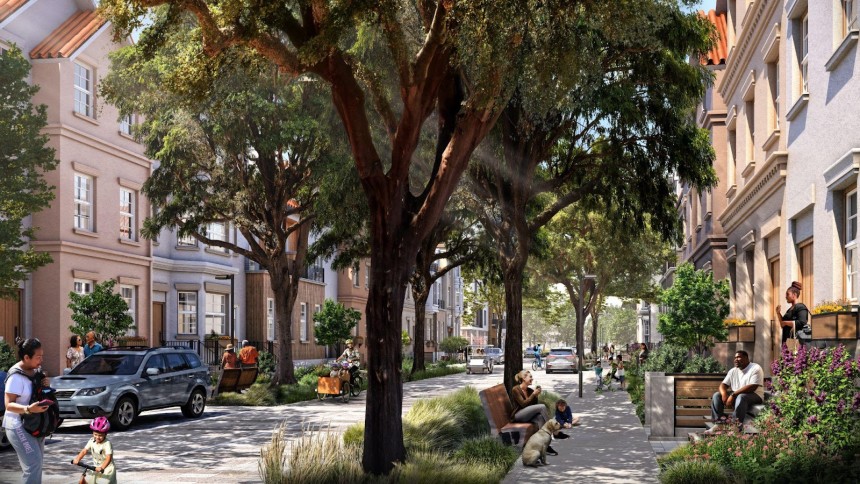Creating new paths to home ownership in East Solano

For close to a century, homeownership has been the foundation of the California Dream. Homeownership also creates economic mobility, provides security for families during difficult times, and creates the foundation of generational wealth. For much of the 20th century, homeownership was widely attainable in California. But recently, that stopped being the case.
In 1980, about 65% of Californians aged 35-45 owned their home. By the 2020s, less than 40% of 35-45 year olds did (source: Terner Center For Housing at UC Berkeley). That’s a staggering fall, and the root cause for why so many Solano residents saw their children move out of California, or fear what they will do so as they grow older and start their families. When that happens, families lose time with their loved ones. For every young family that moves far away, there are hundreds of afternoons, sports events, weekends, and more that grandparents never get to enjoy with their grandkids.
This is not acceptable. That’s why the East Solano Plan was designed with the goal of making homeownership attainable for as many Solano residents and their children as possible. While we expect to also have all of the home types discussed in this article in a rental option, our focus is on selling the majority of the homes, and enabling homeownership.

Three strategies for making homeownership more accessible
California Forever and other builders who build homes in the new community face the same construction costs as every developer. However, the East Solano Plan is uniquely designed to unlock homeownership for more people using three strategies:
Create a broader range of home types
Provide Solano residents and their children with down payment assistance
Bring better-paying jobs to Solano to increase residents’ buying power.
1. Create a broader range of home types
In the California of the 1970s and 1980s, a young couple could afford a modest starter home in their 20s, and trade up to a larger home later if more space was needed. This gave young people the chance to buy a home, start a family, and build equity.
New starter homes are now very difficult to build. Local land use policy and high construction costs limit buildable housing to expensive single-family homes with two-car garages and big yards. As a result, the first step on the homeownership ladder is now so high above the ground that many people cannot reach it until their late 30s, 40s – or ever.
The East Solano Plan will offer a range of housing options for every stage of life, with a big focus on for-sale starter homes. Creating a variety of housing types makes it easy to up- or downsize through life changes like marriage, kids, empty-nesting, and aging. The mixed-use, medium-density, walkable neighborhood types we are building are uniquely suited to delivering exactly these types of starter homes.
2. Provide Solano residents and their children with down payment assistance
The Solano Homes for All Guarantee provides $400 million in community benefits to help tens of thousands of Solano and Travis families buy homes in the new community, as well as to build affordable housing for lower income residents. One of the most powerful uses of this money will be providing down payment assistance for Solano residents and their children. Here's an example for a 1,100 square foot home priced at $450,000 in today's dollars:

The Solano Homes For All Guarantee would therefore reduce the amount that someone needs to save to buy a home by half, from $54,000 to $27,000 if using a conventional mortgage with a 10% down payment, or from $24,750 to $12,735 if using an FHA mortgage. This would make homeownership accessible to many more Solano families.
How many? By way of example, if the $400 million fund is allocated as $150 million to create deed-restricted lower-income housing and $250 million for down payment assistance, and the average grant or loan is $25,000, then the $250 million can provide assistance for 10,000 Solano families.
To put this into perspective – the $400 million Homes For All guarantee is provided as the new community grows from 0 to 50,000 residents. At 2.5 people per household, that corresponds to about 20,000 homes. That means that 10,000 of the 20,000 homes could be purchased with a downpayment assistance from the $250 million - a full 50% of all homes. And then an additional smaller number of the remaining 10,000 homes would be subsidized affordable housing, using the remaining $150 million. This is an unprecedented commitment to housing affordability in America, all privately funded by California Forever.
The Solano County Board of Supervisors will determine the details of the Homes for All Guarantee in the Development Agreement, following an extensive community engagement process. They will decide whether to offer assistance as grants or loans, the amount of assistance, any eligibility requirements, as well as how the $400 million is divided between downpayment assistance and deed-restricted affordable housing.
To be clear, if the Board of Supervisors elects to provide downpayment assistance through loans rather than grants, those loans would be repaid when the home buyer sells their home, so the fund can continue helping more Solano families become homeowners in perpetuity. Under no circumstances would California Forever receive any of those funds back.

3. Bring better-paying jobs to Solano to increase residents’ buying power.
The median Solano worker earns about $64,000/year.
The Solano Jobs Guarantee requires that we bring over 15,000 jobs paying at least 125% of the county average, or $88,000/year.
This means that a household with two people earning that wage, when combined with down payment assistance, would be able to comfortably afford a starter home in the new community.
Home types and sizes
To truly be a place for people at every stage and walk of life, the new community will offer a suite of housing options in a range of forms, finishes, and price points.
Condos
Some of the most charming neighborhoods in America are built from 3-4 story row-house structures divided into condos, one for each floor. These are popular in both medium-sized towns like Charleston, South Carolina or Savannah; Georgia, and in larger cities like San Francisco (e.g., Marina and Noe Valley), Philadelphia, or Brooklyn. These building types provide walkability in a charming, human-scale setting, including backyards for ground-floor residents to entertain, grill, and garden, while top units can enjoy private roof decks with views of the community and greenery.
Here is a side by side example of two condo layouts (in differently-sized buildings, not the same building). On the left, a 2-bed/1.5-bath unit, and on the right, a larger 3-bed/2-bath unit:

In addition to condos in walk-up row house structures where each story is one unit, we also expect to build many medium and large condo buildings. Those buildings create an opportunity to make condo living really amazing—with large floor plates, high ceilings, and great locations near shopping streets—for those who want it.
Condos with large floor plates in buildings with elevators are also how walkable communities can work for seniors. Great condo buildings can be located in central locations, where older residents can access everything they need within an elevator, within a short walking distance, without having to use a car. Smaller central condos in larger buildings are also a great option for young professionals looking for their first home, in close proximity to parks, bars, and friends in a vibrant downtown.
Single-family homes
These homes will offer the joys of dense living, such as proximity to schools, groceries, and cafes, with all the privacy of owning your own home, like a full backyard with options for accessory dwelling units (ADUs), a garage, or both. Instead of using just two or three large builders, we will also work with many small and mid-sized builders who work at smaller scales, giving those homes a distinct look and feel.
Homes can be built in two-, three-, or even four-story configurations, with sizes anywhere from 1,000 to 3,000+ sqft. Most will take the form of row houses with private backyards, but we also expect to build some detached single family homes on narrow lots that include side setbacks. Here is an example 2-story row house with a backyard and roof terrace:

For each single family home, there is an optional backyard structure. This can be an extra accessory dwelling unit (ADU), an office, a workshop, a garage – or nothing at all, just creating a larger backyard instead.
This space can offer a flexible, multi-generational space that improves access to homeownership. For example, a young person starting work can live in such an accessory dwelling unit in their parents’ backyard as they save for their own home. Friends or family can pool income to buy a home together and have one person live in the ADU. Someone can even buy a home and simply rent the ADU out to help with mortgage payments.
Here is an example with a garage on the ground floor, and a studio apartment above:

Finally, we often get asked about Homeowners' Associations (HOAs). The reality is that some people like them, and some don't. And so our plan is simple – we will build some blocks and neighborhoods that have HOAs, and some that don't, and let everyone choose the type of neighborhood they want to live in.

Starter home prices
For condos, we expect to be able to offer 2-bed/1.5-bath condos around 1,000 sqft in the low $400,000s in today’s dollars. The units located on the ground floor would come with a backyard, the top floor units with a roof deck.
For single family homes, we expect that starter 2-bed/1.5-bath homes just over 1,000 sqft would start under $500,000 in today’s dollars.
Just as importantly, these homes would come with incredible amenities, located on streets with protected bike lanes, within an average of 5 minute walk from a school, a great local shopping street, and a great park.

Building the right homes for everyone
Today, new construction in Solano County is almost entirely large single-family homes. In contrast, we’ll offer many different options for many types of people and stages of life. Just as importantly, we are committed to providing all of these options in the same neighborhoods and on the same blocks, to form truly integrated neighborhoods that include people from all walks of life sharing the joys of city life together.
This will also help address another major issue – multi-generational living. Solano County is one of the most diverse counties in the entire nation. However, our housing stock currently does not match that diversity. For example, the predominant type of new construction in Solano County – detached single family homes – do not lend themselves well for multi-generational living, an option that is so popular with many of our communities. The new neighborhoods are designed to create great options for multi-generational living – whether that’s on the same lot, or in the same neighborhood, with grandma and grandpa living a few doors or a few streets away.
Even for those not interested in multi-generational living, this brings major benefits. Right now, with most neighborhoods consisting solely of single family homes, if seniors want to downsize to a smaller unit but stay in their neighborhood, they often can’t – and if they leave, that means less time with old friends. In contrast, by including all types of homes in every neighborhood, we can make it easy for people to move into larger or smaller homes as their life changes, while keeping friends and family as close as ever.
Offering different home types and different price points, all mixed together, helps make real diversity possible. The East Solano Plan offers a future where people from all walks of life can find their homes, making homeownership possible for many who otherwise would not have that option.
–
Note: this post was edited on July 10, 2024 to clarify pricing for starter homes, both condos and single family homes.